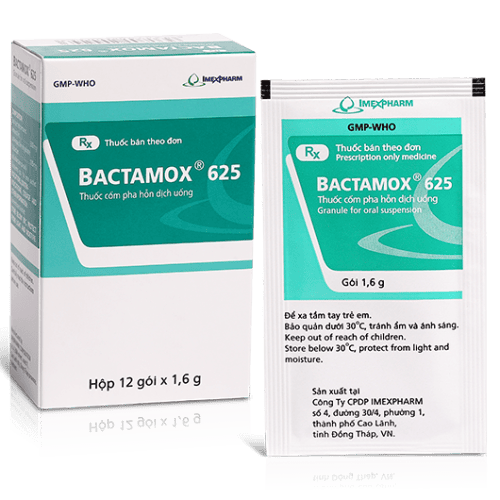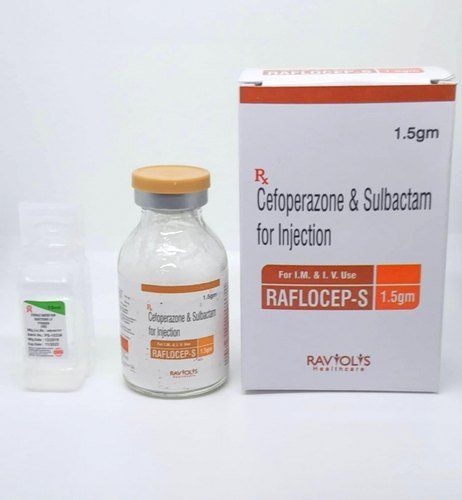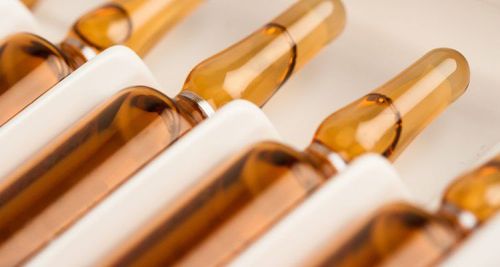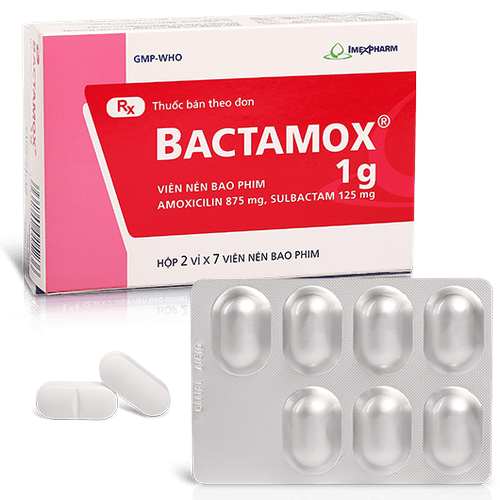This is an automatically translated article.
Drug Turatam is often prescribed to treat typical bacterial infections such as respiratory tract infections, skin infections,... During the course of taking the drug, patients need to follow the instructions of the doctor. doctor for early treatment.
1. What is Turatam?
Turatam belongs to the group of antifungal, antiviral, antiparasitic and anti-infective drugs. Turatam is researched and manufactured by Demo S.A. Pharmaceutical Industry – Greece as a powder for injection, each box includes one vial.
Currently, Turatam is prescribed by doctors to treat infections caused by susceptible strains of bacteria, such as Gram-negative bacteria (Moraxella catarrhalis, Influenza), aerobic Streptococci Gram-positive or methicillin-sensitive taphylococci,... The main active ingredient in the drug Turatam, includes:
Sulbactam (as sodium sulbactam) content 1g. Ampicillin (as sodium ampicillin) 2g.
2. What are the effects of Turatam?
2.1. Indications for use of Turatam medicine What are the effects of Turatam? Currently, Turatam is often prescribed by doctors to treat the following typical bacterial infections:
Upper and lower respiratory tract infections, such as otitis media, rhinitis - maxillary sinusitis, bacterial infections lung, epiglottitis. Intra-abdominal infections, such as cholecystitis, peritonitis, pelvic infections, endometritis. Urinary tract infections. Nephritis - pyelonephritis. Sepsis . Soft tissue or skin infections. Osteoarthritis infection. Gonococcal infection. Prophylaxis of postoperative infections, including peritoneal infections. Prophylaxis of infection after termination of pregnancy/cesarean section. 2.2. Contraindications to the use of Turatam should not be used for the following subjects without consulting a doctor:
Patients with a history of allergy to Penicillin or the ingredients in Turatam. Turatam is contraindicated in patients with Lymphocytic leukemia.
3. Dosage and how to use Turatam
3.1. The recommended dose of Turatam is from 1.5 to 12g/day, divided into several doses every 6 to 8 hours. Mild infections can be treated with Turatam every 12 hours.
Pediatric Dose: For most infections in children will be treated with a dose of 150mg/kg body weight/day intravenously. Specifically, take 50mg Sulbactam and 100mg Ampicillin/kg body weight. For pediatric patients, the drug should be used every 6-8 hours, but not for children under 1 year of age. Dosage in patients with renal impairment: Dosage is based on serum creatinine clearance. Creatinine level > 30ml/min, dose from 1.5 to 3g every 6-8 hours; creatinine level from 15 to 29ml/min, dose from 1.5 to 3g every 12 hours; Creatinine levels from 5-14ml/min administered in doses of 1.5-3g every 24 hours. 3.2. Instructions on how to use Turatam safely and effectively Turatam is usually administered by intramuscular or intravenous injection as prescribed by a doctor. Patients should be treated with Turatam continuously for 48 hours once fever and other problems have resolved. The course of treatment should last from 5-14 days, even more or can use more Ampicillin if the infection is severe.
3.3. How to treat an overdose of Turatam An overdose of Turatam can lead to acute poisoning with Sodium Ampicillin or Sodium Sulbactam. Overdosage of the drug Turatam mainly increases the side effects of the drug. If the concentration of betalactam antibiotics in the CSF is too high, the patient may experience neurological problems and seizures. In addition, both Sulbactam and Amoxicillin are eliminated by hemodialysis. This may increase drug elimination in patients with impaired renal function.
When there are abnormal symptoms after injection / infusion of Turatam overdose, the patient should stop taking the drug and immediately notify the doctor for early remedial measures.
4. Possible side effects when taking Turatam
During the treatment of infections with Turatam, patients may experience the following side effects:
Systemic reactions such as anaphylaxis, anaphylactic reactions, convulsions, nervous system reactions peripheral and central business. Gastrointestinal side effects such as nausea, vomiting, diarrhea, colitis, pseudomembranous colitis. Lymphatic and hematopoietic reactions such as thrombocytopenia, hemolytic anemia, anemia, eosinophilia, direct positive for COOMBs, leukopenia. Biliary or hepatic adverse reactions such as transient elevation of AST and ALT, elevation of Alkaline phosphatase, hyperbilirubinemia, increased LDH, jaundice or liver dysfunction. Skin and skin structure adverse reactions such as Stevens-Johnson syndrome, rash, pruritus, erythema multiforme or skin necrosis. Urethral side effects such as interstitial nephritis. If any of the side effects listed above appear while taking Turatam, you need to quickly go to a medical facility or notify your doctor for appropriate treatment.
5. Important notes when using Turatam
5.1. What precautions should be taken during treatment with Turatam? Before as well as during the use of Turatam to treat bacterial infections, patients should follow the recommendations below to ensure safety and get results soon:
Need immediate emergency care when reactions appear serious anaphylaxis. Patients may be given adrenaline, intravenous corticosteroids, oxygen, airway control, or intubation. As with other antibiotic preparations, regular monitoring is required to detect early overgrowth of susceptible strains of bacteria, including fungi. Discontinue use immediately to seek appropriate treatment if superinfection occurs. Do not use Turatam to treat mononucleosis that is caused by a viral infection. Most people with this condition develop a skin rash when using penicillin. Turatam should be used with caution in patients with liver failure, severe renal failure, pregnant women, the elderly, young children and lactating women. 5.2. What drugs does Turatam interact with? Some other drugs have a risk of interactions when used together with Turatam, including:
Allopurinol when used with Ampicillin may increase the frequency of rash. Aminoglycosides when mixed with Ampicillin can inactivate each other. If these antibiotics must be administered concurrently by parenteral route, it is best to administer the injection at a different site at least 1 hour apart. Anticoagulants when taken with penicillin may alter platelet aggregation and interfere with coagulation tests. Turatam is often prescribed to treat typical bacterial infections such as respiratory tract infections, skin infections,... To ensure effective treatment and avoid unwanted side effects, Patients should strictly follow the instructions of the doctor or pharmacist.
Follow Vinmec International General Hospital website to get more health, nutrition and beauty information to protect the health of yourself and your loved ones in your family.
Please dial HOTLINE for more information or register for an appointment HERE. Download MyVinmec app to make appointments faster and to manage your bookings easily.













